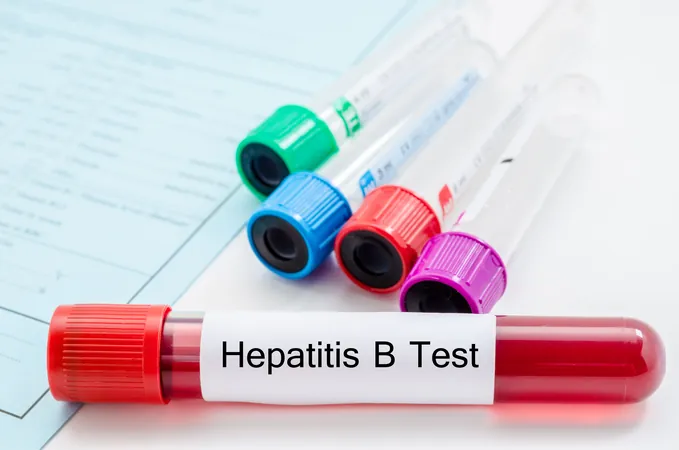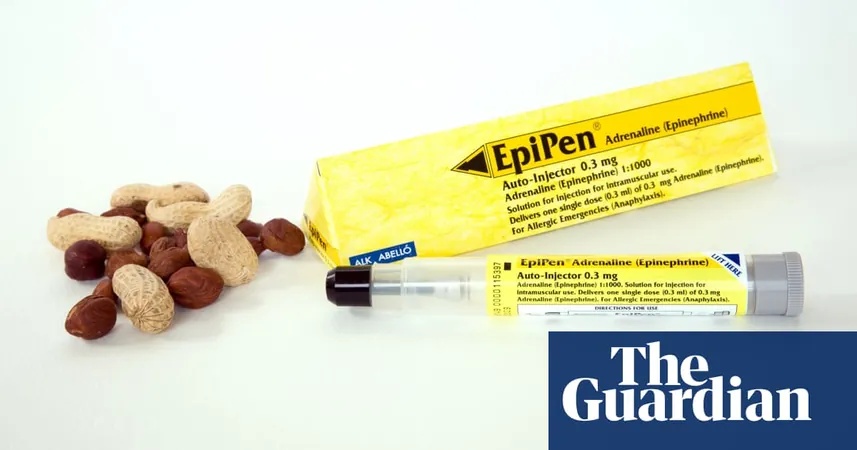
Groundbreaking Advances in TB Treatment: The Battle Continues Against Drug Resistance and Compliance Challenges
2025-04-08
Author: Wei
Tuberculosis (TB) remains a staggering global health crisis, affecting millions and causing significant mortality worldwide. The World Health Organization (WHO) reports that in 2023, an alarming 10.8 million individuals were diagnosed with TB, resulting in approximately 1.25 million deaths. This stark statistic positions TB as potentially the world's deadliest infectious disease, outpacing other ailments and posing a severe public health threat across all demographics.
One of the most pressing challenges associated with TB is the rise of multidrug-resistant tuberculosis (MDR-TB). Each year, around half a million individuals develop this form of the disease, which significantly complicates treatment efforts. The WHO estimates that MDR-TB is responsible for nearly one-third of deaths related to antimicrobial resistance (AMR) globally, highlighting an urgent need for improved treatment access. Shockingly, only about 40% of individuals with drug-resistant TB accessed necessary care in 2023, leaving many at risk of further complications and community transmission.
MDR-TB is most rampant in five countries: India, Russia, Indonesia, China, and the Philippines. Experts like Dr. William Schaffner of Vanderbilt University emphasize the critical need for enhanced diagnostic and treatment resources in these regions. "We need to assist those countries in their diagnosis and treatment of their patients because they are, in a sense, a threat to TB elimination around the world," he stated.
While the incidence of MDR-TB is less pronounced in developed nations, its potential to spread remains a concern. "It can be exported to the rest of the world just through travel," warns Dr. Schaffner. In the U.S., MDR-TB accounts for less than 1% of reported cases, which contrasts sharply with the international crisis. Financial disparities between developed and developing countries also exacerbate the situation, with the global market for TB treatments presenting unpredictable challenges in resource-limited settings.
The Current Landscape of Drug Development
Despite the alarming statistics, there is hope on the horizon. The TB drug development pipeline is currently more promising than ever, with 28 drugs undergoing phase 1, 2, or 3 trials, including 18 entirely new chemical entities. However, progress is fraught with hurdles. Funding interruptions and political decisions, such as those seen recently in the United States, threaten to divert crucial resources away from TB research.
Tiberi and colleagues emphasize the need for enhanced political commitment and financial support to ensure a robust clinical trial infrastructure. "While the current TB drug pipeline is the most robust it has ever been, further trials and an evidence base are required to select the most effective regimens," they argue.
The Importance of Treatment Adherence
Equally critical to the fight against TB is treatment adherence, particularly among those diagnosed with MDR-TB. Dr. Schaffner highlights that many cases stem from incomplete or erratic treatment, with 16% of MDR-TB cases arising from patients who received inadequate therapy in the past. Innovative solutions, such as directly observed therapy (DOT), have been implemented in the U.S., where health workers observe patients taking their medication to enhance adherence.
The objective is clear: improving treatment compliance is essential to curbing the spread of drug-resistant TB and ultimately saving lives. As the world grapples with this enduring public health crisis, the urgency for coordinated efforts in research, funding, and community health support remains paramount.
Conclusion
With TB's death toll and the rise of drug-resistant strains posing increasingly complex challenges, it is crucial to foster a global response that prioritizes the development of innovative treatments while ensuring consistent and effective care delivery. Together, through collaboration and commitment, we can forge a path toward a world free of TB. Now more than ever, the fight must unite researchers, healthcare providers, governments, and communities alike to change the course of this disease. Will we rise to meet this challenge? Stay informed and engaged – the future of global health depends on it!




 Brasil (PT)
Brasil (PT)
 Canada (EN)
Canada (EN)
 Chile (ES)
Chile (ES)
 Česko (CS)
Česko (CS)
 대한민국 (KO)
대한민국 (KO)
 España (ES)
España (ES)
 France (FR)
France (FR)
 Hong Kong (EN)
Hong Kong (EN)
 Italia (IT)
Italia (IT)
 日本 (JA)
日本 (JA)
 Magyarország (HU)
Magyarország (HU)
 Norge (NO)
Norge (NO)
 Polska (PL)
Polska (PL)
 Schweiz (DE)
Schweiz (DE)
 Singapore (EN)
Singapore (EN)
 Sverige (SV)
Sverige (SV)
 Suomi (FI)
Suomi (FI)
 Türkiye (TR)
Türkiye (TR)
 الإمارات العربية المتحدة (AR)
الإمارات العربية المتحدة (AR)